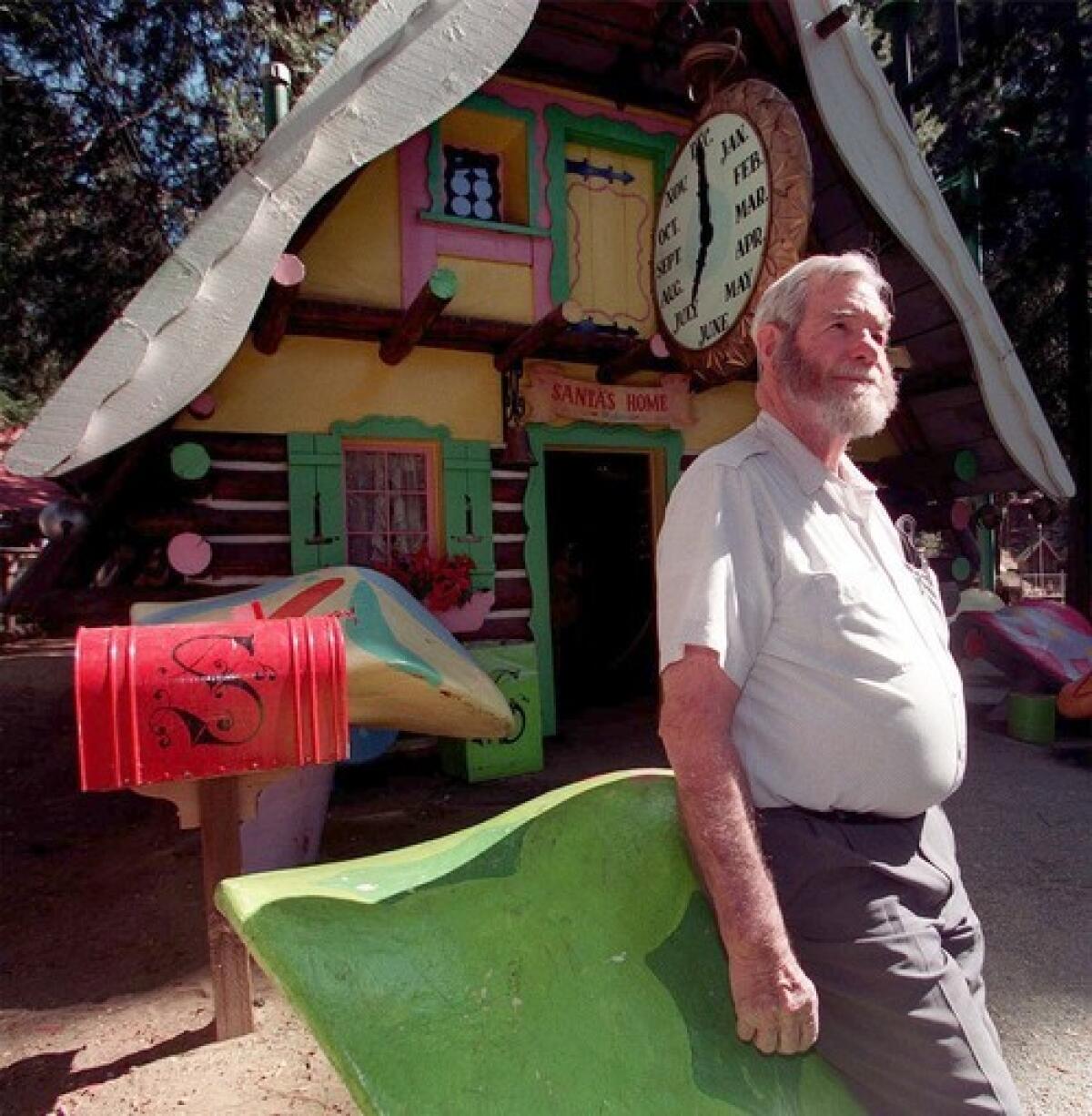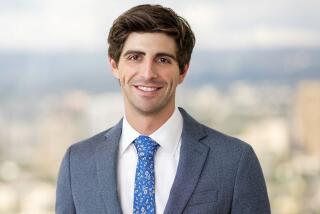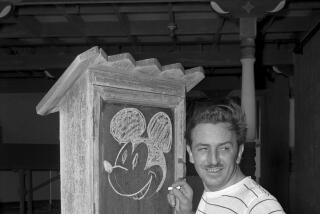J. Putnam Henck dies at 91; general contractor built Santa’s Village

J. Putnam Henck, who built Santa’s Village in the 1950s on family land near Lake Arrowhead and was the owner-operator of the elfin theme park during its final two decades, has died. He was 91.
Henck died Jan. 15 of kidney failure at his home in Skyforest, said his daughter, Pam Thompson.
The year that he was born -- 1918 -- his parents paid $10,000 for 440 acres in the San Bernardino Mountains, planning to build a resort. After his family moved to Skyforest in 1923, his father became a pioneering developer and his mother opened Lake Arrowhead’s first school.
In 1953, the Henck family leased 15 acres to developer Glenn Holland, who wanted to create a North Pole-themed amusement park and hired Henck, a general contractor, to build it.
With a crew, Henck used trees cleared from the land to build fake log cabins topped with artificial snow and create giant candy canes, candles and gingerbread men.
When Santa’s Village opened six weeks before Disneyland in 1955, “traffic was backed up all the way down the mountain,” Henck told The Times in 2006.
Throughout the 1950s and 1960s, a steady stream of day-tripping motorists drove the Rim of the World Highway, seeking out the sliver of faux Arctic that featured kiddie rides, a candy kitchen, a toy shop, live reindeer and, of course, Santa.
After the original investors went bankrupt in 1978, Henck and his family took over the park. He handled the maintenance and finances while his wife, Pamela, wrote scripts for the puppet show, hired performers and became the Lollipop Lady, who handed out lollipops to park guests.
“We’ve had some pretty good Santas,” Henck said in 1998 in The Times, but “some of these old guys start to really thinking they’re Santa,” becoming so boisterous they had to be thrown out.
The park started turning a profit for the Hencks after they ran a TV commercial and added such rides as a merry-go-round and Ferris wheel, he later said.
During its heyday, Santa’s Village drew nearly 180,000 visitors a year, but by the 1990s, the recession and changing times were taking a toll, Henck said.
“The young generation began to over-program their kids to where they had so much to do, and not enough time for a four-hour or longer round-trip drive up the mountain,” Henck told The Times in 2006.
The decision to close the park in 1998 was also personal. Since his wife had died the previous year, Santa’s Village and Henck had not been the same, The Times reported in 1997.
In 2001, the Hencks’ 220-acre property, which included Santa’s Village, was sold for $5.6 million to Thomas Plott, who owned a string of care facilities. He planned to reopen the park but only refurbished some buildings before he died in 2005.
The park remains a ghost town and its future is in limbo, according to the Henck family.
Joseph Putnam Henck was born May 5, 1918, in Los Angeles, the eldest of four children of Joseph Henck and the former Mary Putnam, one of the first female vice principals in Los Angeles schools.
The family was living on an orange ranch in Hemet when his mother agreed to move to the mountains only if their home had running water.
“It had water,” Henck later recalled, “but no electricity.”
In Skyforest, south of Lake Arrowhead, the elder Henck subdivided 160 acres for development. With a few locals, he built a water system and roads, and opened a general store.
“Putty,” as the junior Henck was called, earned a degree in civil engineering in 1940 from UC Berkeley and served in the Navy during World War II.
He lived in San Bernardino for 25 years, where he raised three children with Pamela, whom he married in 1953.
In Southern California, he built 475 projects that included libraries, arts centers, churches and reservoirs.
Once he and his wife started running his most fanciful creation, they lived in the rear of Santa’s Village and worked “seven days a week, 12 hours a day,” Henck told The Times in 1984. “But just seeing the people happy and all the kids laughing and yelling and having fun makes it worthwhile.”
Its closing, he later said, marked “the end of a certain age of innocence.”
In addition to his daughter, Pam of Dallas, Henck is survived by two sons, David of Phelan, Calif., and Peter of San Jose; seven grandchildren; and four great-grandchildren.
A memorial service will be held today at 2 p.m. at the Lake Arrowhead Resort and Spa, 27984 Highway 189.
Instead of flowers, the family suggests donating to Rim of the World Historical Society, P.O. Box 1550, Lake Arrowhead, CA 92352.
Henck had documented the area’s past in his 1999 book, “From the Memories of Putnam Henck (Plus a Little Bit of History).”
More to Read
Start your day right
Sign up for Essential California for the L.A. Times biggest news, features and recommendations in your inbox six days a week.
You may occasionally receive promotional content from the Los Angeles Times.







